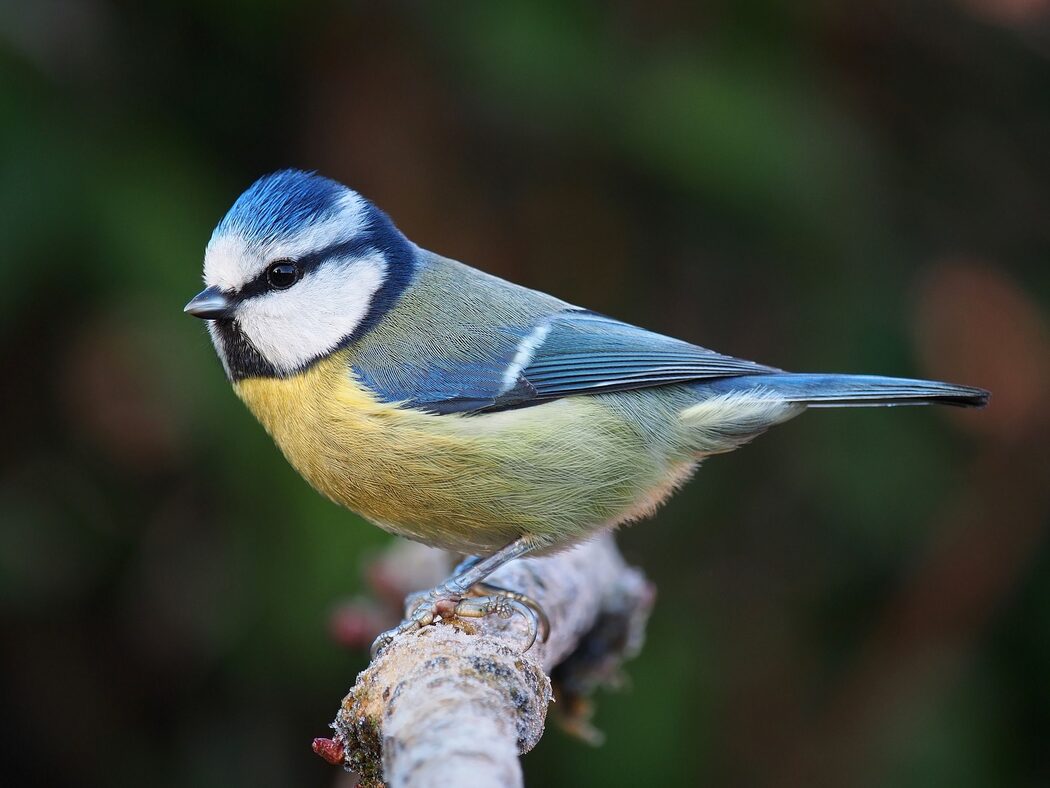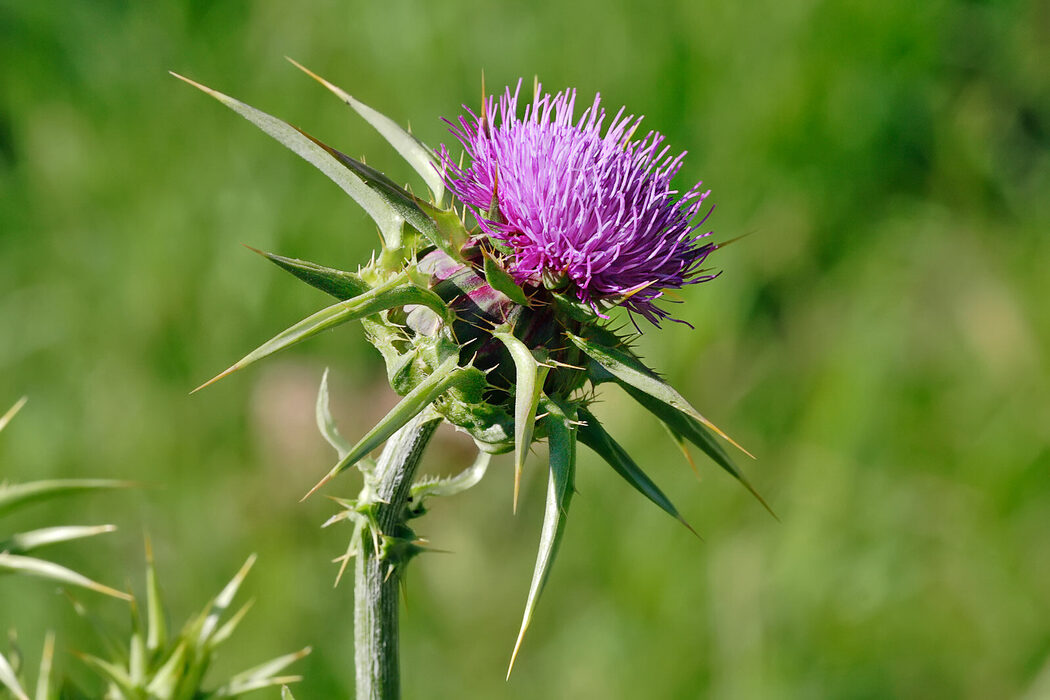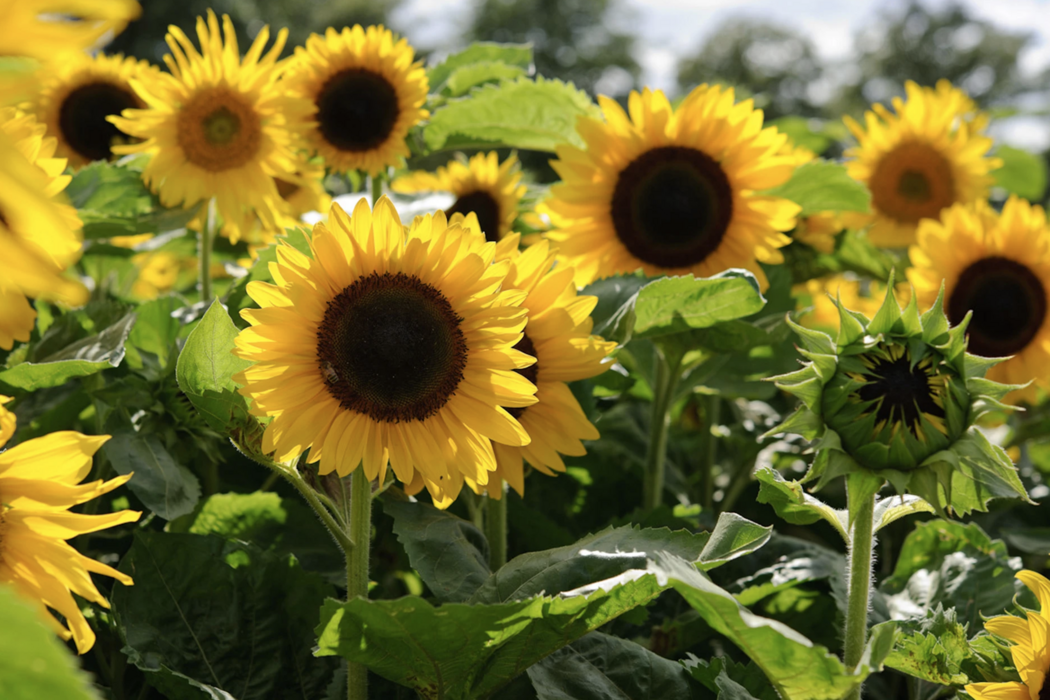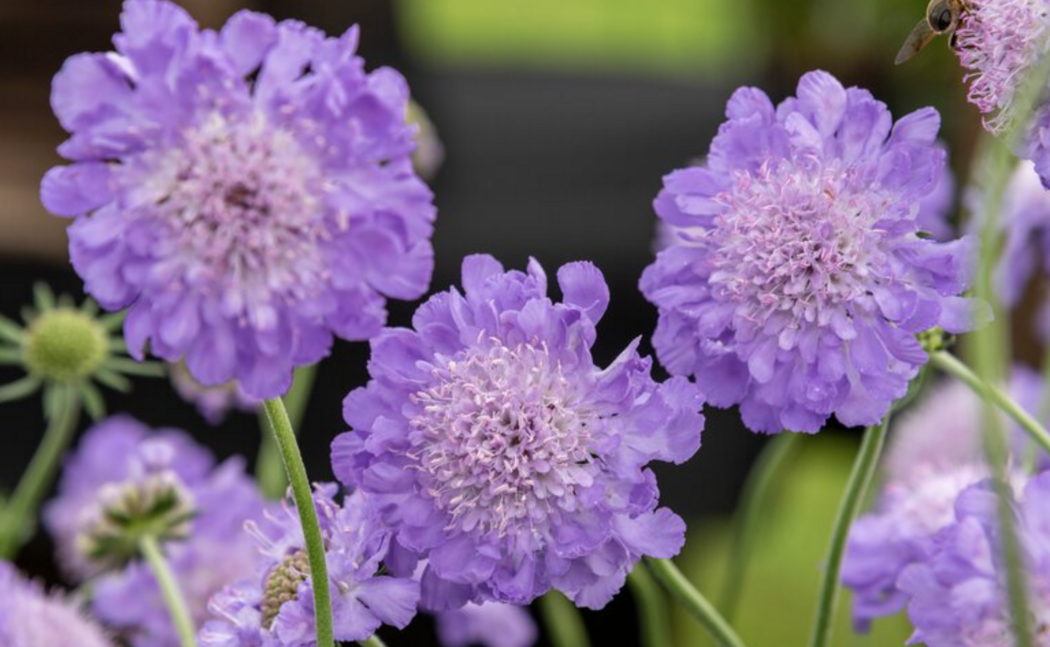Blue Tit (Cyanistes caeruleus)
A garden bird favourite due to their colourful plumage and lively personalities, blue tits are one of the most frequent visitors to gardens and parks. They’re also found in deciduous and mixed woodland. Fun to watch because of their ability to perform acrobatics, they often hang upside down from branches, feeders and bird tables to access food. Caterpillars are also a favourite food, but they eat almost everything from insects to seeds. They like to nest in cosy little spaces, from cracks in trees to watering cans.

Plants for garden birds
If you have any outside space, even a window box, you can help create a bird-friendly environment. Planting bird- and insect-friendly species will not only attract birds, but insects, another important source of food. As bird populations in gardens grow, the birds manage the insect populations, which also helps control insect damage to plants. While the plants listed here are native to Northern Europe, the same principles will apply in many other environments.
Hedges and shrubs provide warmth and safety, and many birds like to search for insects in leaves left on the ground. Climbers and taller plants give cover for smaller birds that spend a lot of their time on the ground, such as wrens.
Weeds
You don’t have to worry about planting these! Uncultivated wild areas encourage bird life, as do the clover and daisies that spring up in lawns. Blackbirds, sparrows, finches, jays, woodpeckers and pigeons all enjoy finding invertebrates and insects in lawns, and goldfinches and bees love dandelions.

Thistles Cirsium, Carduus, Eryngium, Echinops
Goldfinches search out thistle seeds, and where there are clumps of thistles, you may be lucky enough to see a small flock.
Fruit trees and bushes Malus, Pyrus, Prunus, Ribes, Rubus
Flower-eating birds such as bullfinches will come for the blossom, and these plants host pollinating insects which attract tits. Bushes and patio varieties can be grown in pots, so they can fit into smaller gardens too. Ornamental flowering currants are not edible for humans, but are great for birds.
Guelder rose Viburnum
Bullfinches love its shiny berries, and the plants give good shelter and cover to smaller birds.
Clematis Clematis
Different varieties will flower from spring through to autumn. Decorative seed heads attract finches and sparrows, and dense foliage provides cover for nests.
Love-in-a-mist Nigella
Very easy to grow, all varieties will self-seed and feed little birds for the summer months.

Sunflowers Helianthus
The big seeds are energy-rich and will attract many species, including sparrows, tits, nuthatches and finches. It’s the single flower types that produce the large heads of seeds.
Lavender Lavendula
Migratory birds such as house martins, swifts and swallows like the insect life on lavender plants, and goldfinches feed on the seeds.
Roses Rosa
Single-flowered varieties are home to plenty of tasty insects. Choose varieties that produce hips for fieldfares and mistle thrushes.
GoldenrodSolidago
Bigger gardens can take advantage of this plant to attract many insects and birds. It’s easy to grow as it will thrive in poor soil, and the seeds attract finches and other smaller species like linnets and siskins.
Aster Aster, Callistephus, Eurybia, Kalimeris, Symphyotrichum
Leave the stems to stand after the flowers have faded. Birds will eat the seeds, and blue tits use the shelter of the stems to forage for insects.

Scabious Knautia
The flowers are like little pincushions and give gardens colour all through the summer. The seeds are popular with finches, such as bullfinches.
Ice plantSedum
Butterflies and bees love these unusual plate-like flowers, and finches enjoy the seeds. The stems provide shelter for insects and invertebrates that draw in birds.
Firethorn Pyracantha
This thorny plant provides bright berries and a nesting habitat, and small birds can hide in its dense branches.
Ornamental Grasses Stipa, Carex
Grasses may not be an obvious plant for birds, but they work well. They give shelter and nesting material, as well as seeds of which blue tits are particularly fond.
Holly Ilex
Holly berries in reds and oranges offer a sought-after food in winter, feeding a variety of species from song thrushes and blackbirds to fieldfares and redwings.